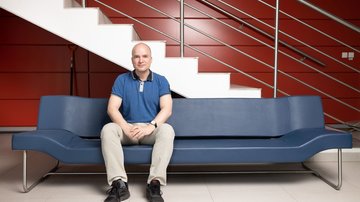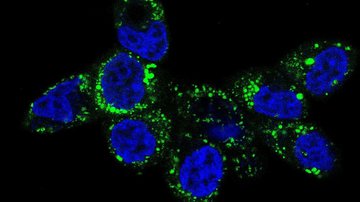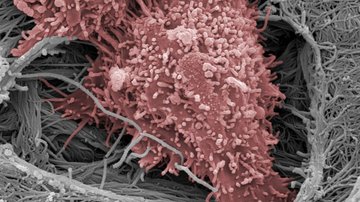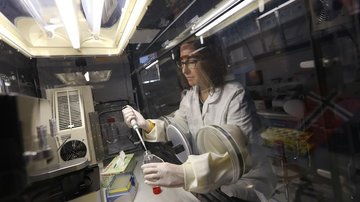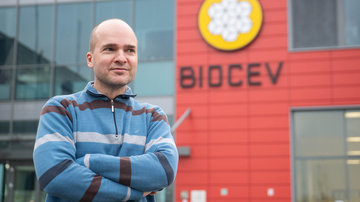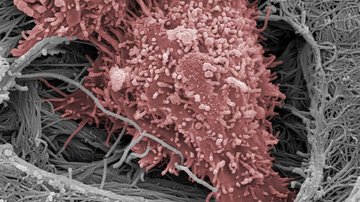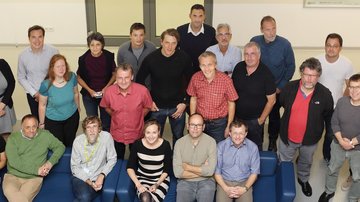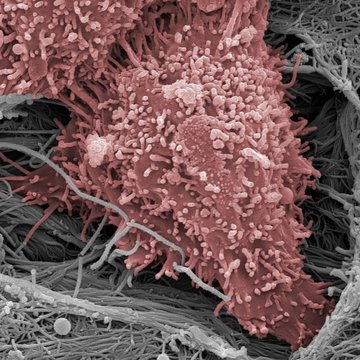
Molecular and Cellular Mechanisms of Invasiveness of Tumour Cells
Jan Brábek is laureate of the League against Cancer prize 2018
The League against Cancer awarded for the second time Mr. Jan Brábek (Faculty of Science of the Charles University - BIOCEV) for outstanding work in the field of oncology. Specifically, a set of papers published in the area of tumor cell invasiveness research and the definition of a migratistatics category as agents that have the potential to significantly improve the prognosis of solid tumors.
Interview with Jan Brábek by Pavel Vancová, editor of the Newsletter of the League against Cancer:
How does migrastatics differ from conventional cytostatics?
It must be emphasized that migrastatic treatments are not yet being applied; we are currently working with medicinal chemists and clinical oncologists to be able to start using migrastatics in practice for cancer treatment as soon as possible. It is a brand new approach to cancer treatment that we only designed last year. Migrastatic and cytostatic treatments differ both in the manner and the purpose of the treatment. While the purpose of a cytostatic treatment is to stop the growth and proliferation of cancer cells, a migrastatic treatment prevents cancer cells from moving, locally invading and metastasizing. Logically, different types of substances will be used for each treatment.
What are the main benefits of a migrastatic treatment?
The main benefit of a migrastatic treatment is the elimination of the most dangerous properties of cancer cells – their local invasion into their surrounding environment and metastasizing. For most malignant solid tumours, this could mean a shift from a fatal prognosis to a localized chronic disease. The qualitative benefits of migrastatic treatments compared to standard therapies that are now commonly used are related to the fact that during migrastatic treatments, cells do not have to be exposed to cytotoxic stress – they are only “kept in place”. The pressure on cancer cell resistance is not so high and if resistance to migrastatics develops, it does not mean that the cells will proliferate – resistant cancer cells do not increase or even worse, prevail.
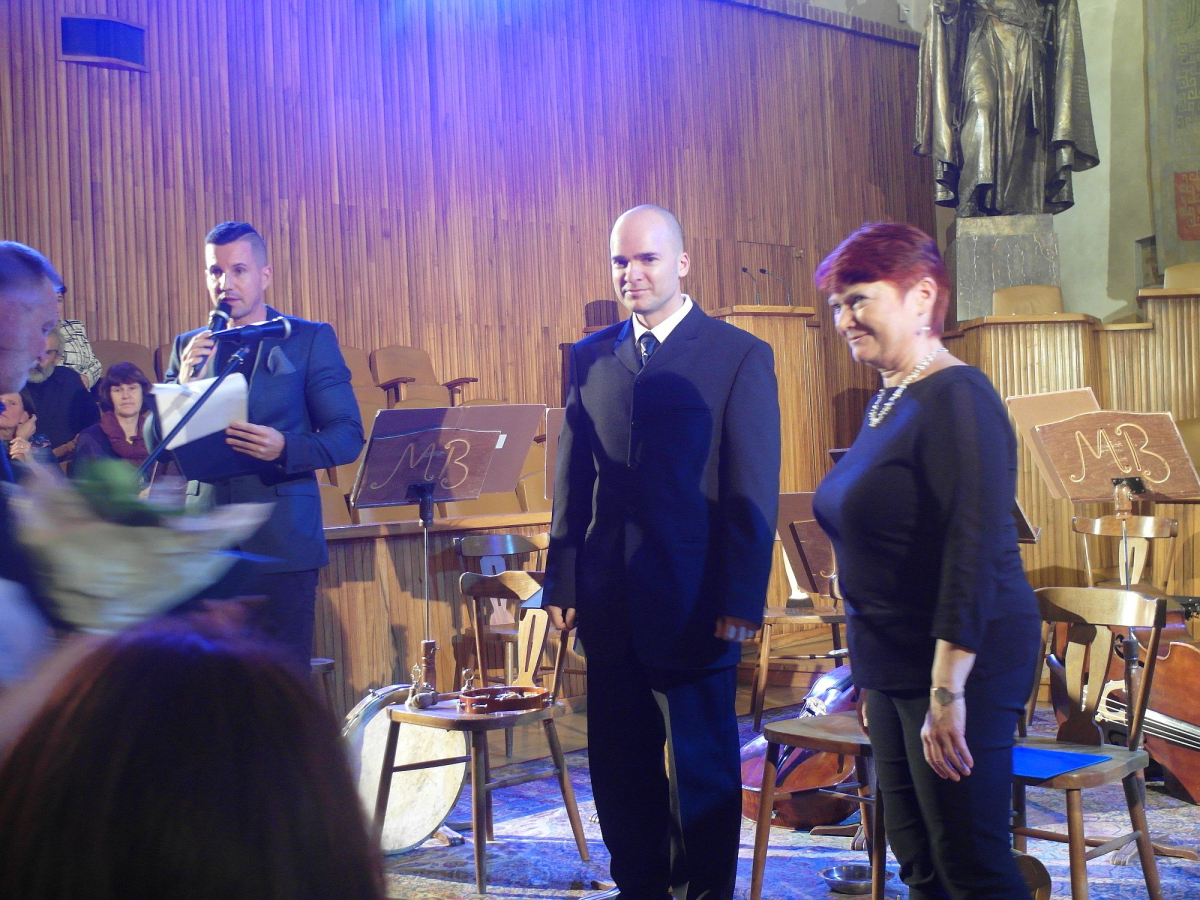
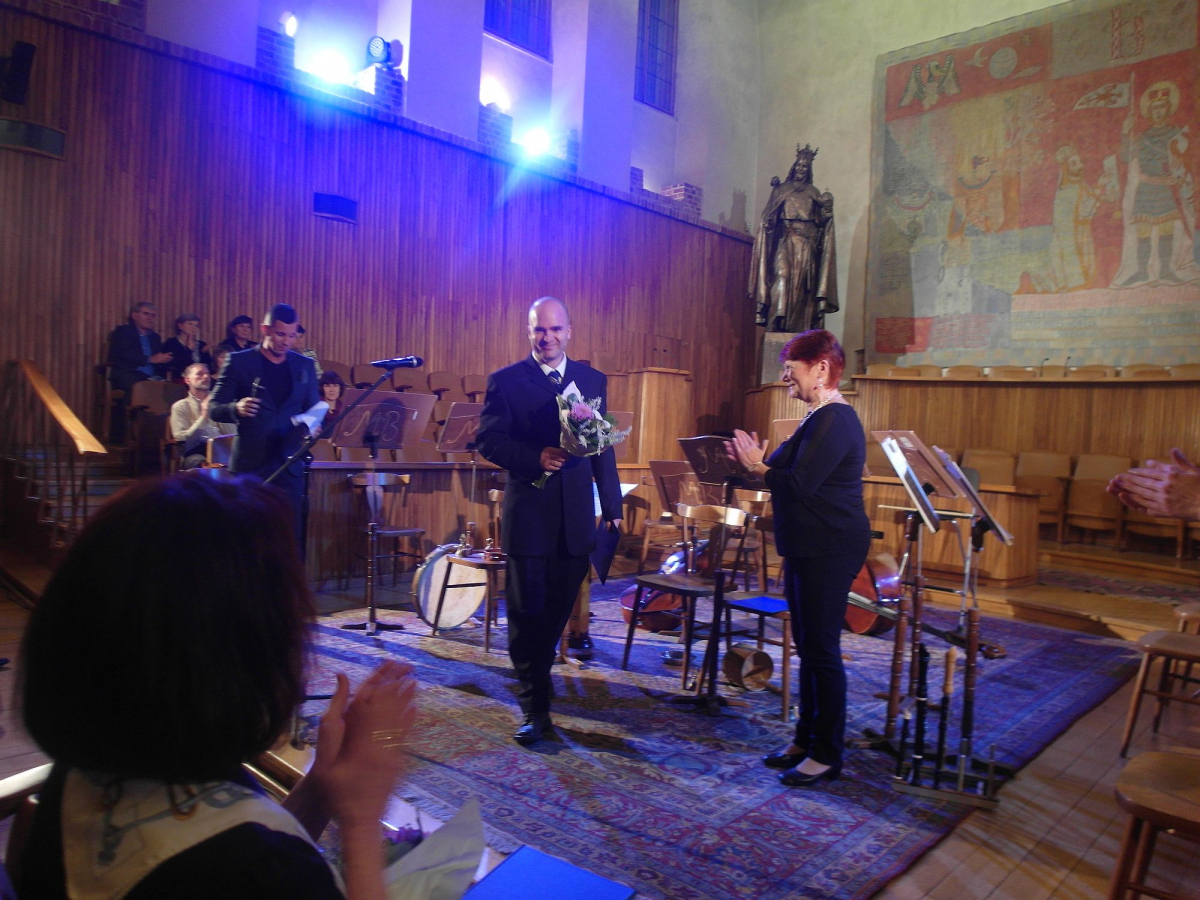
Does this mean that this is a new treatment strategy for solid tumours?
Yes, it is a completely new pillar of cancer therapy (next to surgery, radiotherapy, chemotherapy and immunotherapy) – and the only one that was defined in the Czech Republic. It is important to say that the objective is not to replace cytostatics, but to complement them. The combination of migrastatics and cytostatics and other therapeutic methods seems to be a very promising approach for treating metastasizing cancers. The interaction between migrastatics with other groups of cancer medication offers great opportunities for synergic cancer treatments.
Is it a new category of cancer medication?
Yes, it is a brand new category of cancer medication. Approximately 90% of deaths related to solid tumours are caused by invasion by cancer cells and their subsequent metastasizing. However, until now the range of cancer therapies lacked a specific category of medication that focused on invasion and metastasizing. In an article published in the Trends in Cancer journal last year, we introduced the term “migrastatics” for substances inhibiting all manners of cancer cell invasion and metastases to differentiate them from conventionally used cytostatics, which are targeted at cell proliferation. A critical assessment of the use of migrastatics is very important because if it proves effective, it might cause a breakthrough in the treatment of solid tumours. At this point, we would like to stress the contribution of all researchers in biomedicine who research migration, invasion and metastasized cancer cells, as well as the medicinal chemists and clinical oncologists whose work allowed us to come up with a new concept for solid tumour treatment.
Would you tell our readers something about you and your hobbies? What do you like to do in your free time?
In my free time, I mostly like to be with my family. My wife and I have two sons, 12 and 9 years old. I like reading both fiction and non-fiction, I go to cultural events, especially concerts and exhibitions. I have been practicing martial arts for a long time and I do many other sports for fitness.


